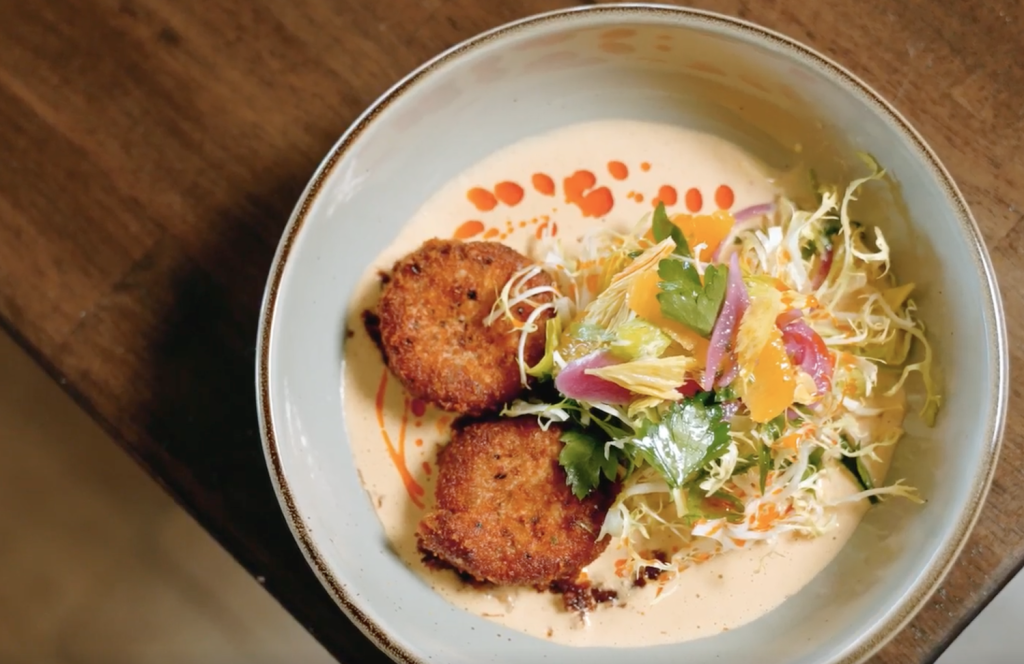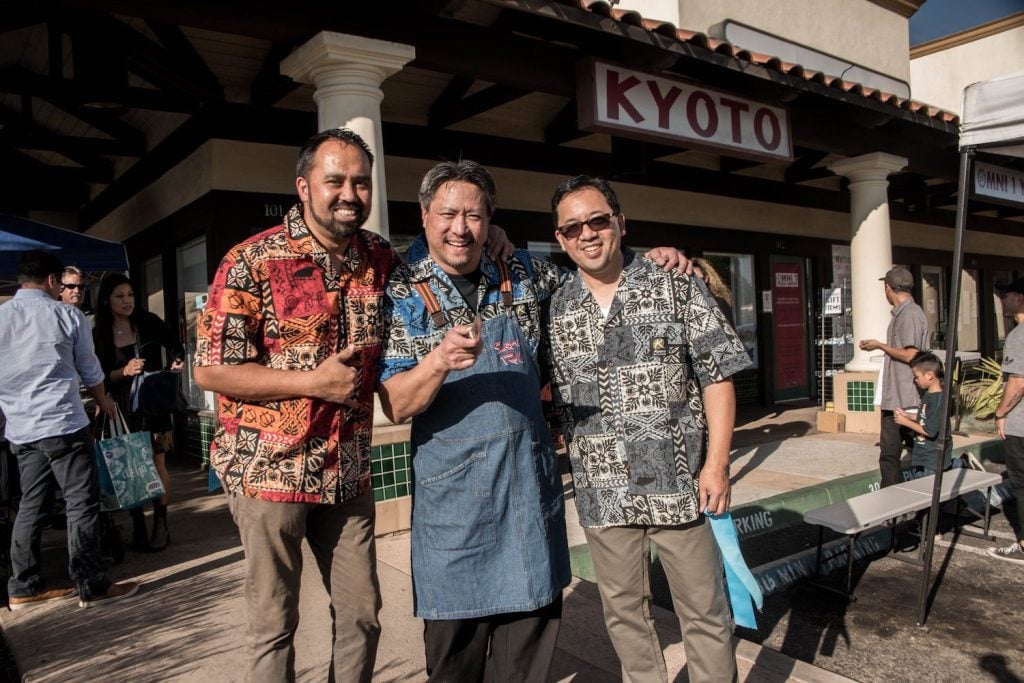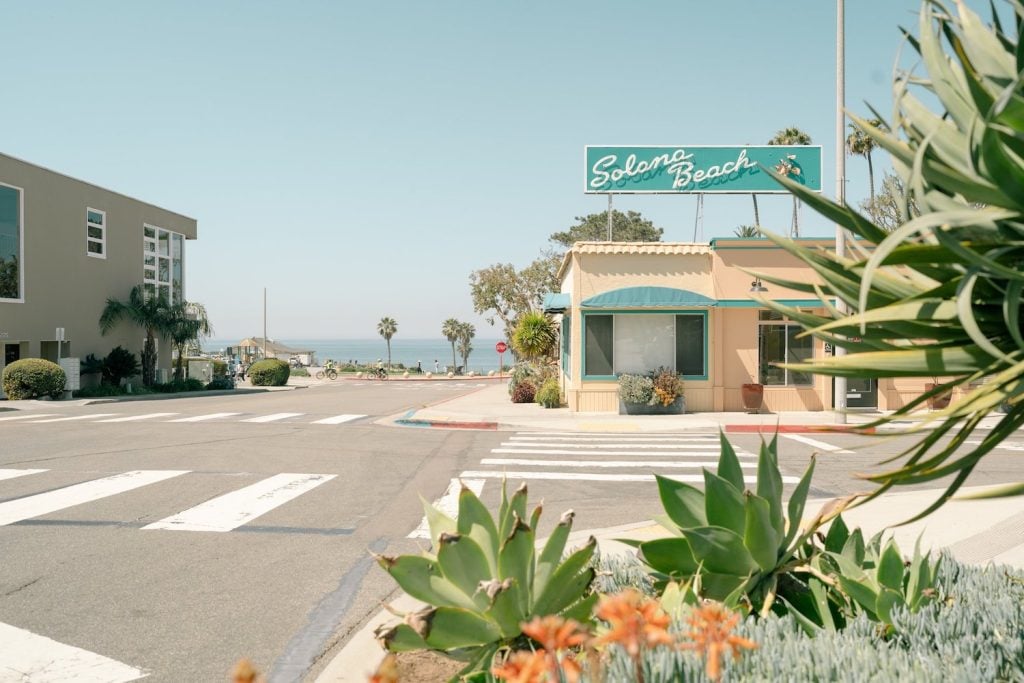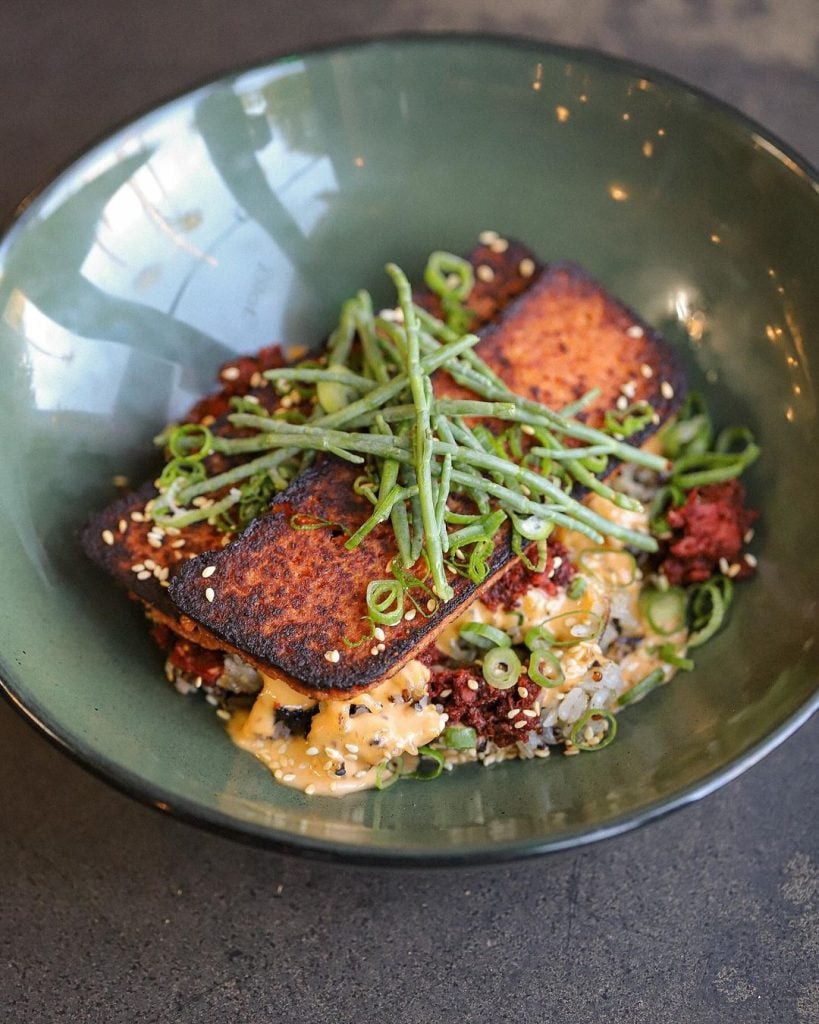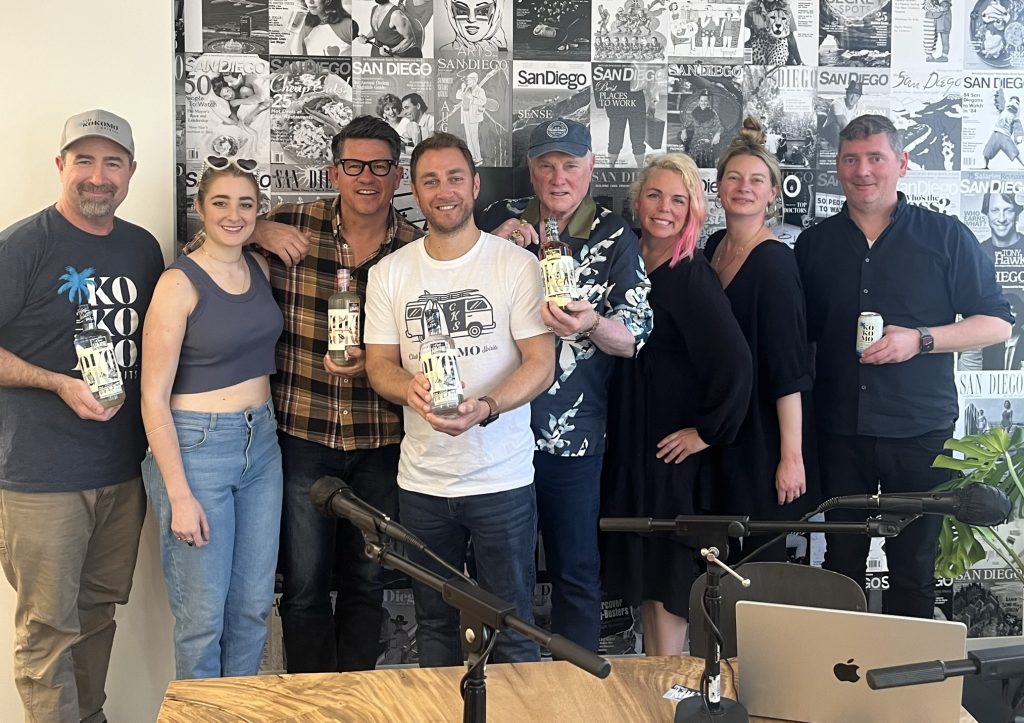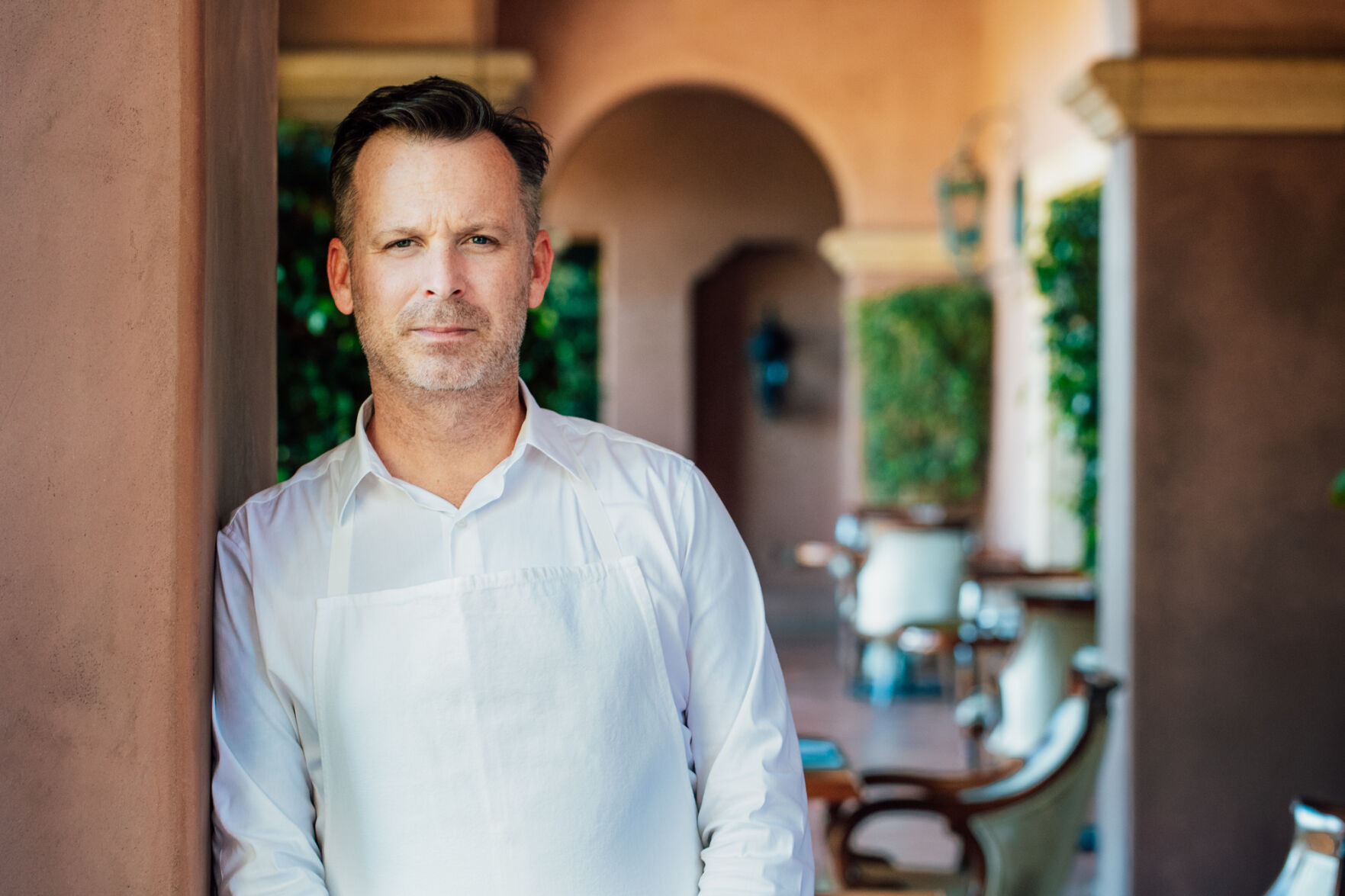
Chef William Bradley – Addison
Photo Credit: Lauren Di Matteo
There are only 14 three-star Michelin restaurants in the country. California has seven. Six of those Michelin stars are in the Bay Area (French Laundry, Manresa, Benu, Quince, Atelier Crenn, SingleThread). The other is now in San Diego.
Addison restaurant did it. After years of hard work and almost singular focus, the signature restaurant at the Fairmont Grand Del Mar in San Diego is rated one of the top 14 in the country by the world’s gold-standard of restaurant name-making.
It’s a pretty massive accomplishment for San Diego native and executive chef William Bradley and his team: chef de cuisine Stefani de Palma, sous chef Jonathan Brambila, wine director Dan Chapman, cocktail genie Ian Ward, and director of service Sean McGinnesss.
“San Diego—we did it!” Bradley exhorted from the stage last night at the unveiling.
This is turning point for San Diego and its exceptional cuisine. Not just the fancy restaurants. For farmers. Makers. Holes in walls. Everyone.
I’ve been lucky to eat at a handful of Michelin stars in the country for the job (Momofuku, French Laundry, Eleven Madison, Le Pigeon, Melisse, etc). And it’s not boosterism or municipal rah-rah that I confidently say the three best meals of my life were the French Laundry, Addison, and my very first carne asada burrito at Roberto’s when I was eight.
The teams at Michelin restaurants are, in short, masters of their craft. From chef to front of the house, they’ve obsessively refined their skills until the entire operation at places like Addison is nothing short of world-class. They’re the sort of restaurants that have a five-point plan for how to properly handle a diner’s handbag. If you accept cooking as an art form, they’re technicians like Monet or Eddie Van Halen—a lifetime of very technical, repetitive intention goes into the well-deserved accolade. You don’t luck or improv your way into a Michelin star.
“It’s like climbing Mt. Everest,” Bradley told us last year on San Diego Magazine’s food podcast, Happy Half Hour. In the episode, he gives an inside look at what it takes to earn each Michelin star. The handbook of how to become a three-star is daunting, byzantine, some would say absolutely bonkers. For instance, Addison’s training manual has over 100 touch points (and that’s just service, we’re not to the food or beverage yet).
No one’s pretending Michelin is the end all, be all for restaurants. Michelin’s highly specific criteria rewards a highly specific type of restaurant (usually highly formal and highly expensive). And some of the most magical dining I’ve ever experienced has come in nondescript rooms in the middle of nowhere, roadside shacks with recipes on sticky notes and benevolent food steam tumbling out the windows. The brisket at Smitty’s in Lockhart, Texas, will change your life even as it dirties your shoes. Birria tastes best in Baja dust. Most Michelin chefs will tell you the same thing.
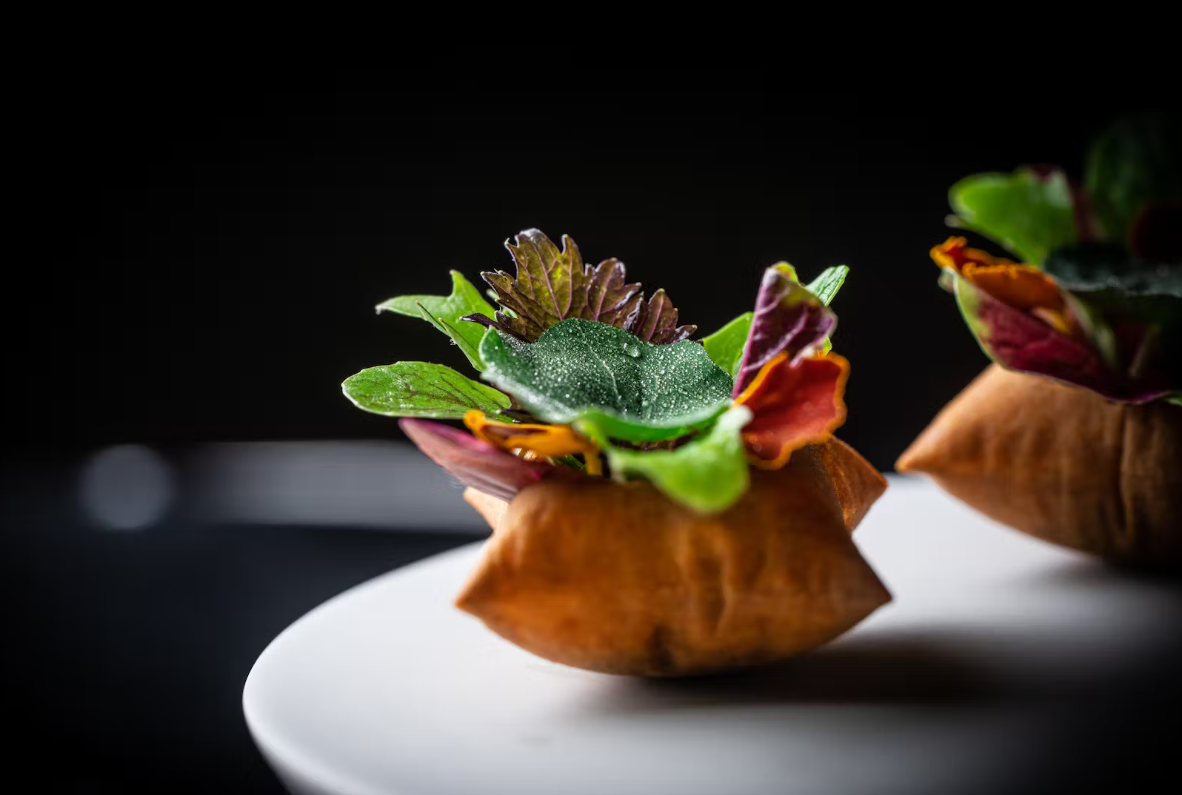
Addison, 3-star
Credit: Eric Wolfinger/Addison
But here’s why Addison’s third Michelin star is such a big thing for San Diego’s food scene, sure, but also for the city.
After years of being viewed as a culinary wasteland (and, honestly, until a handful of years ago that was largely accurate), the city’s food scene has been good enough for national and international accolades for quite a while. It may never be on par with San Francisco or New York (and you’d never want it to be) due to having 8-12 million fewer people. But the quality of San Diego’s farmers and fishers and makers and chefs and bartenders and hospitality pros has, for years now, been elite.
Yet until a few years ago, Michelin seemed unaware that chefs were legally permitted south of L.A., or that drinks in San Diego were allowed to be served in anything but a souvenir cup. Addison has been deserving of at least two stars for the last decade (they got their first star in 2019). People familiar with the process have suggested Michelin simply didn’t have enough inspectors in the area. It wasn’t a matter of quality in San Diego; moreso a lack of Michelin resources. That’s changed in the last few years, however. They’ve been paying more meaningful attention to San Diego.
No hard feelings. Welcome, Michelin. Pull up a chair.
Bradley and his team deserve a sizable portion of the credit for Michelin’s attention. As a native (Chula Vista, specifically), the chef has repeatedly told me that was the goal: to get the national and international powerhouses of the food world to rightly recognize San Diego’s evolution, or at least its existence.
Why? Because it helps everyone here. National and international media will now come to San Diego far more frequently. They’ll dine at Addison at the Fairmont Grand Del Mar—a three-star Michelin restaurant. They’ll want to know where Bradley and de Palma got their spot prawns, and find the Saraspe fishing family or Tuna Harbor Dockside Market. They’ll ask about the tomatoes, venture into local farms. While here for a few days, they’ll discover the ramen at Menya Ultra, the birria at Tuetano, the gyro egg rolls at Shawarma Guys. Even more people will spend $3,000 on a vacation here. They’ll hit a show at one of our arts venues. Their parking tickets will fund our law enforcement.
The work that Addison has done puts San Diego on a very illustrious map.
The trickle down effect will be significant. We wrote about this three years ago. After 15 years of covering California gastronomy, specifically in San Diego, 2019 was the first time we saw national food media sending their people to the city. And then, well, the world broke.
This’ll bring them back.
